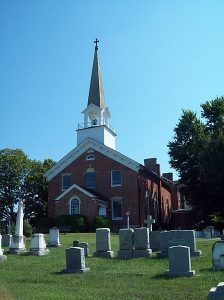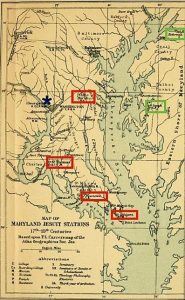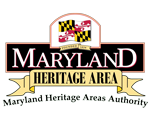St. Ignatius Church and St. Thomas Manor

A plaque at the St. Ignatius Church states that St. Thomas was founded by Father Andrew White in 1641.
In 1645, Puritan sympathizers captured St. Mary’s City and looted the Maryland properties held by Catholics. Father White and Thomas Copley, S.J., were arrested and transported back to England. In 1647, Cecil Calvert, Lord Baltimore, secured control over the colony and soon thereafter issued a patent of more than 2,000 acres along the Port Tobacco River to the Maryland missionaries. By the end of the eighteenth century, the Jesuits had purchased contiguous lands and operated a 500-acre tobacco plantation known as St. Thomas on the east side of the Port Tobacco River. The land was worked by indentured and enslaved laborers, who grew tobacco and corn, and by the 18th and 19th centuries, wheat and other grains.
After 1717, St. Thomas Manor frequently served as the home of the mission superior. In 1741, enslaved laborers completed a brick residence manor for the Jesuits, the oldest surviving example of Georgian architecture in Maryland. A small chapel was appended to it. In 1794, John Carroll was ordained the first Roman Catholic bishop in America. In 1798, St. Ignatius Church was built on the property and a few years later the Jesuits were reestablished here. In the 19th Century, Francis Neale, SJ, served as resident pastor from 1818-1837 after a long career that included helping to found Georgetown College and serving as the fiscal agent of the Corporation of Roman Catholic Clergymen. In 1833, William McSherry, SJ, took up residence at the site when he took the post of Provincial.

Like the other plantations operated by the Jesuits, slavery was central to St. Thomas Manor’s success. The Province’s 1838 sale of 272 enslaved people included 46 individuals from St. Thomas, many of whom were separated from their families. A document listing the names of Jesuit enslaved people included in the sale hangs in St. Ignatius Church.
In 1973, the parish sold all of its land, with the exception of the 23 acres comprising St. Thomas Manor and St. Ignatius Church, to the state of Maryland. An archaeological survey was conducted in 1987 showing that there are numerous unstudied archaeological sites at St. Thomas manor where enslaved Africans and Black tenant farmers lived. A 1905 map shows the location of “cabins” and “dwellings,” which were probably the homes of enslaved Africans and free Blacks.
St. Ignatius Church is a site on the Maryland-designated Religious Freedom Scenic Byway.
Additional Resources
Still, We Speak (stillwespeak.org)
The 272: The Families Who Were Enslaved and Sold to Build the American Catholic Church, Rachel Swarns (book)
Jesuit Slaveholding in Maryland, 1717-1838, Thomas Murphy, S.J. (book)
* http://slaveryarchive.georgetown.edu/
SMR: Descendants | Georgetown University
Libraryhttps://apps.mht.maryland.gov/Medusa/PDF/NR_PDFs/NR-1026.pdf
